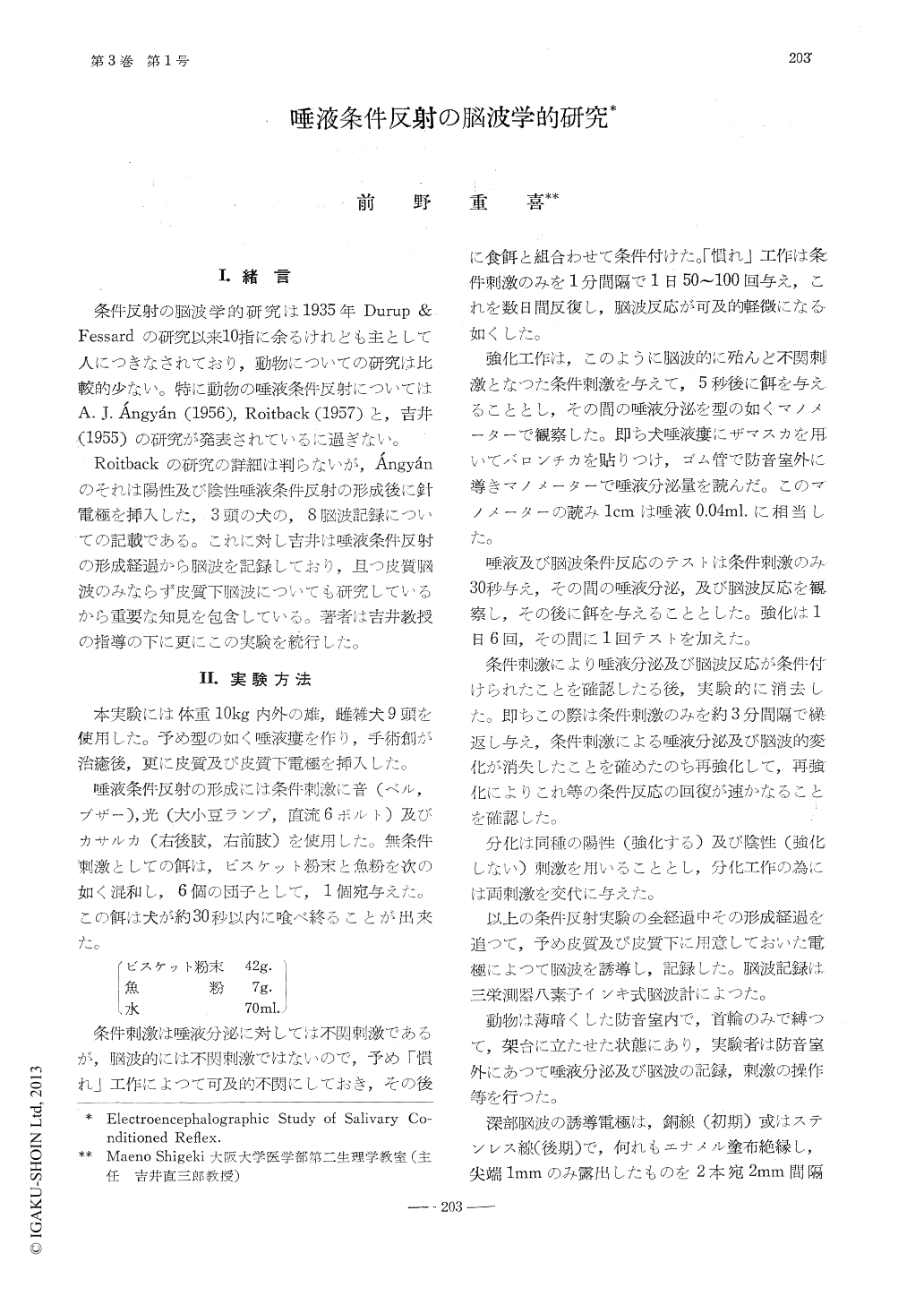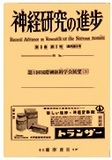Japanese
English
- 有料閲覧
- Abstract 文献概要
- 1ページ目 Look Inside
I.緒言
条件反射の脳波学的研究は1935年Durup & Fessardの研究以来10指に余るけれども主として入につきなされており,動物についての研究は比較的少ない。特に動物の唾液条件反射についてはA. J. Àngyán(1956),Roitback(1957)と,吉井(1955)の研究が発表されているに過ぎない。
Roitbackの研究の詳細は判らないが,Àngyánのそれは陽性及び陰性唾液条件反射の形成後に針電極を挿入した,3頭の犬の,8脳波記録についての記載である。これに対し吉井は唾液条件反射の形成経過から脳波を記録しており,且つ皮質脳波のみならず皮質下脳波についても研究しているから重要な知見を包含している。著者は吉井教授の指導の下に更にこの実験を続行した。
1) The unpaired conditioned stimulus prior toconditioning caused generalized evoked potentialsfollowed by generalized desynchronization of fastwaves in the cortex, diencephalon and midbrain. About 5c/s waves appeared from certain areasof the brain, i. e. from the gyrus cinguli, cornmissura fornicis, cornu fornicis, cornu Ammonis,n. habenularis, n. caudutus and n. accumbens. These activities were diminished or completelyabolished by repeated unpaired trials (habituation). 2) The stimulus of feeding caused 7~5c/s (7c/sat the beginning, immediately after eating) wavesto appear in the brain stem. 3) By conditioning alimentary salivery secretion, the conditionedstimulus which had been made indifferent by theprocedure of habituation again became capableof causing generalized evoked potentials, generalized desynchronization or augmented fastwaves and 5 per second waves from the fasciculus retroflexus, n. commissurae posterioris, n. centralis lateralis, n. caudatus, n. habenularis,cornu fornicis, stria medullaris and colliculussuperior, before the peripheral conditioned refiexwas to be seen. The sites at which the 5 persecond waves appeared were not the same asthose where 7~5c/s waves appeared followingingestion. 4) The positive EEG changes werereplaced after several unpaired trials by 2~5 persecond slow waves when the peripheral responsewere not completely abolished. 5) A negativeconditioned stimulus caused in the stage of generalization EEG changes like those elicited bythe positive stimulus together with salivary secretion. The stage of differentiation was characterized by irregular slow waves from the cortexand subcortical areas elicited by the negativeconditioned stimulus and the absence of saliverysecretion. 6) The above results were discussedin reference to bibliography. The activity ofascending reticular activating system as an arousalresponse takes part in the orientation reflex, itssuppression in habituation, and the hippocampalresponse as an emotional excitation in unconditioned response to the conditioned and unconditioned stimuli. The ascending reticular activatingsystem is considered further to play a role in theearly stage of the formation of positive conditionedreflex, which is in the course partially suppressedwhen the hippocampal arousal response is conditioned to give rise to effective conditionedrespose. The internal inhibition is thought tobe based on the suppression of the activity ofascending reticular activating system. 7) Themechanism of external inhibition seems to be verydifferent from that of internal inhibition, thoughits nature is not clear.

Copyright © 1958, Igaku-Shoin Ltd. All rights reserved.


